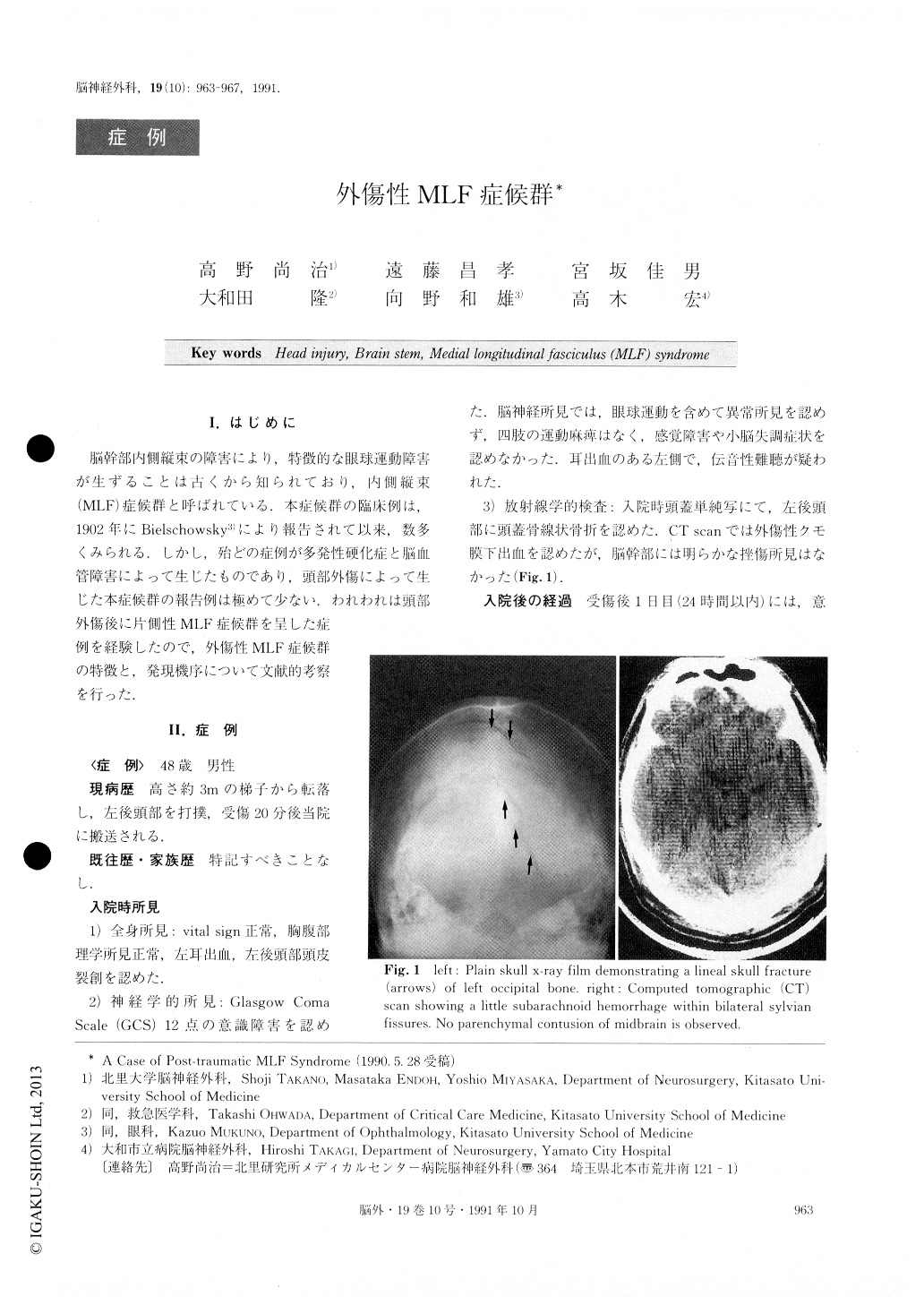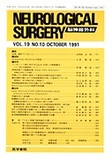Japanese
English
- 有料閲覧
- Abstract 文献概要
- 1ページ目 Look Inside
I.はじめに
脳幹部内側縦束の障害により,特徴的な眼球運動障害が生ずることは古くから知られており,内側縦束(MLF)症候群と呼ばれている.本症候群の臨床例は,1902年にBielschowsky3)により報告されて以来,数多くみられる.しかし,殆どの症例が多発性硬化症と脳血管障害によって生じたものであり,頭部外傷によって生じた本症候群の報告例は極めて少ない.われわれは頭部外傷後に片側性MLF症候群を呈した症例を経験したので,外傷性MLF症候群の特徴と,発現機序について文献的考察を行った.
Abstract
Medial longitudinal fasciculus (MLF) syndrome re-cognized 2 days after a head injury is described.
The patient was a 48-year-old man who had fallenfrom a ladder about 3m high. On his admission, scalp contusion on the left occipital area was noticed. Neuro-logical examination revealed no neurological abnormali-ties except slightly disturbed consciousness. Plain skull X-ray films demonstrated a lineal skull fracture of the left occipital bone. Computed tomographic (CT) scans showed a slight subarachnoid hemorrhage within the bilateral sylvian fissures, but no parenchymal contusion in the brain stem was observed. On the 2nd day, when the patient regained full consciousness, impairment of adduction of the right eye and a fine nystagmus of the left eye on left lateral gaze were recognized. Conver-gence was intact. Right side MLF syndrome was dia-gnosed. This syndrome gradually disappeared followed by the initial improvement of adduction of the right eye, and the patient had completely recovered about 20 days after the head injury.
Three major mechanisms leading to MLF syndrome caused by head injury are reported in the literature. They are :① primary brain stem injury,② secondary brainstem injury by trans-tentorial herniation, and ③ circulatory disturbance of perforating branches of the vertebro-basilar artery due to shearing force. In our case, the slightly disturbed consciousness at the time of the head injury indicates that this syndrome was not brought on by primary or secondary brain stem injury. The scalp contusion and lineal skull fracture in the left occipital area suggests that the trauma force may have heen transmitted in a longitudinal direction from post-erior to anterior, and shearing strain may have dam-aged the circulation system of perforating branches of the vertebro-basilar artery which supply the area of MLF in the brain stem.

Copyright © 1991, Igaku-Shoin Ltd. All rights reserved.


